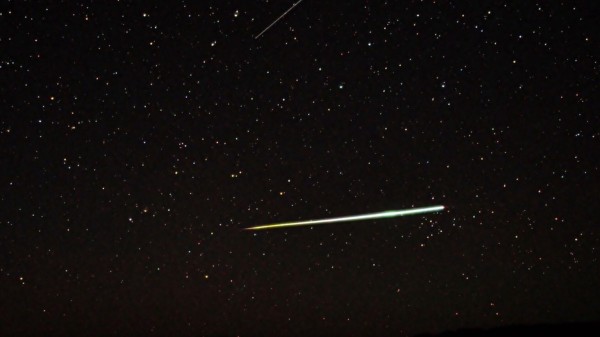One of the most beloved meteor showers of the year, the Lyrids, is nearly here — with general activity going from around the night of April 16th through the night of April 25th. The Lyrid meteor shower will hit its peak, though, late on the night of April 22, 2015 (the early morning hours of April 23, 2015).
The best time to watch this year (and most others) is probably just a few hours before dawn — probably sometime around 2-4 am will be best. But, of course, whenever you make the time to go out, there will be a good show that night — with 10-20 meteors an hour, when seen from a dark location, being the current prediction.
The Lyrids meteor shower sometimes see breakout years though, when peak rates can climb as high as 100 meteors an hour — so something to keep in mind, even if it’s not likely this year. (There will however be a number of meteor showers this year that reach peak rates near that number, see: Meteor Showers 2015, Dates and Times, Perseids, Lyrids, Geminids, Leonids, Draconids, Orionids, Etc).
As far as viewing conditions go — the darker the skies of the area that you’re watching from, the more meteors that you’ll see. Dark, rural locations far from the light pollution of cities are ideal — but if you can’t get far from the city, at the very least try to find a place without any lights (street lights, etc) in the immediate area.
While temperatures are likely to be fairly warm, it’s always a good idea to dress warmly, and to possibly bring a blanket and some hot coffee or chocolate — both of which go a ways towards improving the experience. A nice reclining chair is also an idea with some things going for it — giving you the option of getting off the ground (which probably has dog poo on it, if you’re anywhere near most modern cities).
A bit of background on the Lyrid meteor shower — the Lyrids are one of the oldest meteor showers still around, with reports of a meteor shower with a similar radiant and date going all the way back to 678 BC. The meteor shower gets its name from the constellation of Lyra (the Harp), which is the radiant point from which most of the meteors appear to originate from during the shower.
To keep tabs on the other celestial events of the year you can download this annual calendar of celestial events! (It’s a free PDF).

Image Credit: Meteor via Wiki CC
